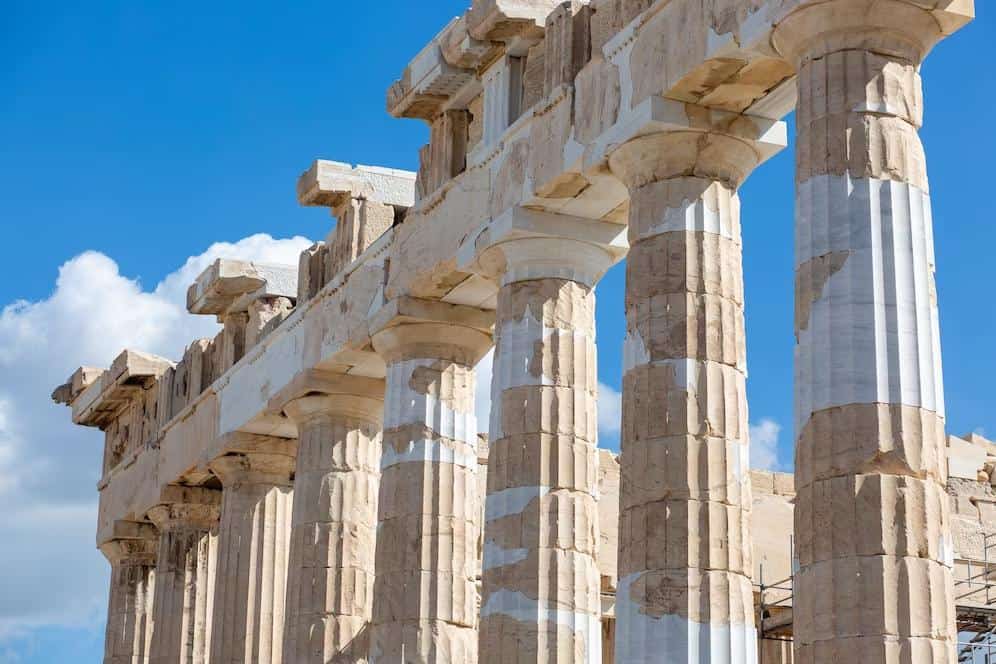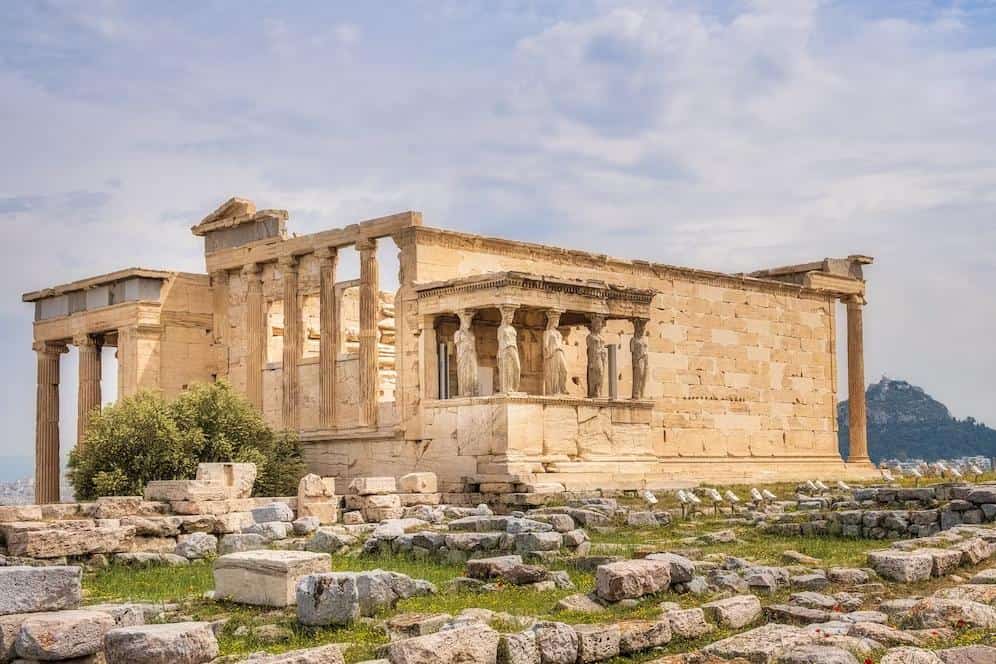The best way to learn about a culture is to go to the place and get first-hand experience, right? But we can’t always jump on a plane or drive to our destination. Fortunately, there’s a way to experience the tradition and learn more about Ancient Greek history without leaving your home.
Art!
Since the dawn of time, art has existed in different shapes and styles. Many old civilizations used it to leave their mark on the world. Such an example is Ancient Greece. There are a bunch of Ancient Greece antiques today that allow us a glimpse into that world. So, if you want to discover more about these pieces of art and what they truly teach us, keep on reading!
What Do Ancient Greek Antiques Teach Us?
Every student has, at least once, been tasked in class to write something about Ancient Greek culture. From elaborating on Homer’s works like Odyssey and Iliad to describing a clay figure, this culture is widely known. As such, a lot of teachers ask their students to write an essay about Ancient Greece in college. But culture study is not everyone’s forte, so essay examples from sites like StudyDriver are abundant online.
From these, and especially Ancient Greek antiques and uniques, you learn a lot about the culture of the time, explore the history and their traditions, and most importantly, see the values the people back then held. So, let’s explore a bit more about each of these “teachings” and learn why it’s so important to be extra cautious around antique items.
Help Us Learn About History
Antique items come from eras ago. Hence, they hide a lot of historical meaning. One simple vase from the Archaic period tells us about the life Ancient Greeks lived during that time.
For example, in this mentioned era, Ancient Greece history was influenced by a lot of Egyptian themes. Hence, their art has a lot of figures like sphinxes and griffins. Likewise, the terracotta vases have depictions of their daily life, funerals, and mythology.
Or if you’re to look at an antique item from the Classical period (as another example), you’ll notice that Ancient Greeks had managed to improve their architectural knowledge, building structures like the Parthenon. This is also known as the Golden Age of Greece.

Teach Us About Ancient Greek Culture & Tradition
You can’t learn about one nation’s history without dipping your toes into the culture itself. Ancient Greeks were known for their architecture and sophisticated culture. Many studies today put a huge emphasis on this part in their general study of human culture. Their works influenced buildings in Rome, and many of those structures are seen even in today’s modern creations.
Regarding culture, a chronological look into the art itself between the periods of development in Ancient Greece will show you how their traditions changed. In the Golden Age of Greece, people were happier, paid more attention to aesthetics, theatrics plays were written and acted out weekly, parties were a common occurrence.
Contrary to that, in the Archaic period, people only stuck to creating hand-works of small bronze (mostly horses). It indicates that their resources were still scarce, maybe guiding us to the conclusion that most of them didn’t live a much lavish life.
Show Us the Values of Ancient Greeks
A piece of art says a thousand words to those who hear it. Take the vases created in the Golden Age of Greece. Most of them depict people dancing and singing. But a vase or other Ancient Greece antiques from several decades prior mostly tell the story about a deity or a hero and their battles trying to save humanity.
So, what does that show us? Ancient Greeks lived a life entwined with gods. They believe some walked the Earth while others kept a watchful eye over them. But with time, this grip that mythology had slowly loosened up, showing that the values turned more to the ordinary people.
Note: Don’t let it fool you—mythology has its roots even today!
Best Antiques From Ancient Greece
Now that you know what simple antiques and uniques from Ancient Greece tell us and teach us, it’s time to check out some examples. We already said that the people in this civilization mostly created everyday items, like vases and helmets.
While some were made to be used by ordinary people (and years later became art when they were dug out on an archeological dig), others were specifically made to be art pieces. In the following parts of this article, we’ll explore more about the best antiques (some of these might be found in antique stores today) that have a piece of Ancient Greece history in them.
Athenian Vases
If you’ve seen Disney’s “Hercules,” then you already know what an Ancient Greek vase looks like. That is probably the first antique that pops into your head when an art item from this period is mentioned.
As we already mentioned, different eras had different things depicted on these vases. Some drew people’s daily lives, while others chose to tell a story through drawings.
Take the works of the so-called Kleophon Painter (a name given to an anonymous artist from the 5th century BC). He used the red-figure pottery, drawing banquets and festivities—all things common for the Classical period. Some of his works today are restored, although a bit damaged.
Ancient Greek Helmets
You’ve surely read about the Ancient Greek battles. Or seen a movie—does “Sparta” ring a bell? Ancient Greeks used to wear helmets in battle, and depending on the period, they were made differently.
The most popular style is the Corinthian style. Plenty of movies and shows today use it when depicting an ancient battle. It covers the head and neck entirely, with only two slits for the eyes and one for the mouth. From that simple design, you’re able to see the preparedness and caution Ancient Greek warriors had when going into battle.

Another interesting style (a variation of the first) is the Cretan helmet. Mainly created during 650–620 BC, these helmets were some of the best quality weaponry. One example of this helmet was auctioned in New York for $842,500. Interestingly, it has a hook on the top and is covered in mythological drawings.
Of course, another variation of the Corinthian model that we must mention is the Chalcidian helmet. Just like the Cretan design, this style put more emphasis on the design, opening up the sides to allow warriors to listen better. Depending on the status of the person wearing it, these helmets were adorned with crests or had more parts that covered the head better.
Many archeological digs nowadays still find these antiques buried throughout deserts or places that were part of this culture centuries ago. It’s not uncommon to find helmets with holes in them or some broken parts—proof of the wars in the past.
Geometric Sculptures
An interesting period in Ancient Greek culture was the Geometric era. During these years, many sculptures, and artists created antiques and uniques with geometric shapes. Although mostly present in vases, slowly, sculptures adopted the idea.
Interestingly, the geometrical shapes were mixed with animals. To be clearer, for example, they created bulls that had limbs coming out of their necks and creating circles. Later on, Ancient Greeks modified these pieces to be closer to the real things, i.e., they started shaping the animals with curves around their limbs (to keep the geometrical style) and got rid of all “unnatural” looks.
Marbled Statues
Another signature art piece of Ancient Greece is marble statues. It started around the Classical period when artists began creating full-size statues of not only gods but regular yet prominent people of their age.
One highly admired sculptor of the Hellenistic era was Skopas. His pieces were with extraordinary detail, presenting even the gods as mere humans. Hence, even today, his statues are highly sought by art collectors. Some decorate the halls of museums. Moreover, there are plenty of replicas of his work, trying to bring back a revolutionary style (and still holds such significance).
Final Words
As you can see, the study of human culture can easily be done through the art significant for that period. Ancient Greece is known as a time of growth but also sophistication and creation. Many things that have been made during this era have their links even today, especially if we’re talking about art.
Some research has also been done on the relevance of Ancient Greek culture to today’s society. Those who truly want to dive deeper into this tradition and everything it holds have plenty of available college lesson programs to choose from.
But if you are only interested in the basics, then go to your local antique shop and check out some antiques and uniques from Ancient Greece. These will provide you with every knowledge you need about this period—from their history to the culture, traditions, and values Ancient Greeks had!
